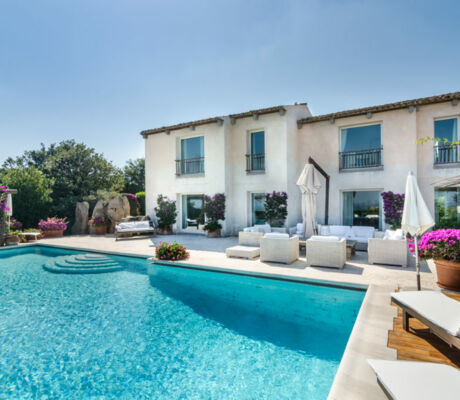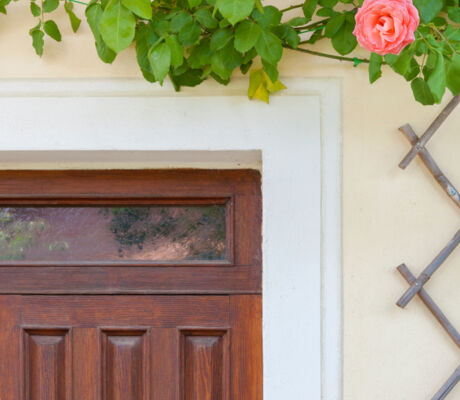The Balearic Islands are situated in the south-western corner of Spain consisting of a group of islands. The main islands are Mallorca (population 850,000), Menorca (population 91,000) and Ibiza (population 150,000) although there are a number of smaller islands with a total population of 1.2 million. This area of Spain has long been a major tourist attraction with millions visiting from Germany, Britain and Scandinavia. As a consequence, interest in Mallorca real estate and Ibiza real estate in particular has increased dramatically over the years.
In 2017 the Balearic Islands saw an increase of 4.1% in GDP against overall Spanish growth of 3.1% and just 2.4% across the Eurozone. The figures for 2018 saw Balearic Islands growth fall to around 2.6% although this was still ahead of the growth in Spanish GDP of 2.5%. Overall growth is expected to fall to around 2.5% across the Balearic Islands in 2019 against expected growth in Spain of 2.4%.
We will now take a look at various issues surrounding the Balearics property and mortgage market, expectations for the future and recent trends.
Overview of the Ibiza Property market
Of the three Balearic Islands it is safe to say that Ibiza is dominated by the upscale/luxury end of the housing market. Indeed, there are many areas of Ibiza where it is difficult if not impossible to find medium-priced properties. In the areas of Saint Joan medium-priced properties make up around one in 10 while in the likes of Santa Eularia, Sant Josep and Sant Antoni this can rise to as high as one in four. As a general rule of thumb, average prices across the Balearic Islands range from €2200 per square metre up to €8300 per square metre. Ibiza is dominated by upscale/luxury properties towards the upper third of this range. Property prices in Ibiza currently start at around €350,000 to upwards of €6 million.
It is no secret that all of the Balearic Islands have a heavy dependence on tourism. The fact that tourist numbers in 2018 were down 1.2% on 2017 does not assist the local economy and property markets. However, this reduction in tourism numbers has been mitigated to a certain extent by a fall in property transaction numbers. Across the islands of Mallorca, Menorca and Ibiza there were only 1842 residential units completed during 2018 compared to 12,162 a decade earlier at the market peak. It is safe to say that a reduction in supply numbers, continued growth in demand and a strong local economy bode well for the medium to long term even if 2019 may see a period of consolidation.
Overview of the Mallorca property market
A recent research note by Knight Frank has cast a very interesting light on the Mallorca property market which is going from strength to strength. Over the last decade we have seen a gradual increase in tourist numbers from 22.8 million up to 27.9 million in 2017. The long-term trend of interest from Germany and British buyers continues but recently there has been a significant increase in visitors from Scandinavia. It is safe to say that Mallorca is now seen as one of the most sought after second home destinations. The fact it is within a two-hour flight time to the likes of London, Barcelona and Frankfurt has not gone unnoticed.
The average cost of a property in Mallorca now stands at around €6250 per square metre although prime real estate can be found in excess of €10,000 per square metre. Historically there was a problem with oversupply but, as mentioned above, total new build numbers across the Balearic Islands have fallen from in excess of 12,000 a decade ago to just 1842. This eliminates the problem of oversupply and the impact this can have on property prices. Indeed, a local building licence moratorium and ban on short-term rentals in parts of the island has led to a change in strategy with many homes now being refurbished and upgraded. There remains strong demand for properties priced between €5 million and €7 million with sea views a common theme amongst the luxury property market. It is worth noting that Mallorca offers the widest range in prices across the Balearic Islands from €300,000 to in excess of €6 million.
Who buys in the Balearics, and why
Over the last decade we have seen continued interest from German and British buyers in the Balearics as well as growing interest from those in Scandinavia and Russia. There may be a slight softening in British buyer numbers in 2019 as a consequence of Brexit (and currency weakness) but history shows this type of trend tends to be relatively short lived. There are a number of reasons why the Balearic Islands are so popular:-
-
Climate
Across the Balearic Islands the summer brings average temperatures in the high 20s although thankfully they are more bearable on the coast with a useful sea breeze. The relatively low rainfall tends to occur between September and January with mild winters and spring/autumn temperatures of around 15°C. The fact you can be in the middle of a mountain range and, just a short time later, sunning by the seaside, will surprise many people as will the fact the Balearic Islands can from time to time experience snowfall.
-
Infrastructure
When you consider that Mallorca alone receives around 28 million visitors per year you can pretty much guarantee there is a solid and improving infrastructure. The Balearic Islands are within a two-hour plane journey from London, Barcelona and Frankfurt which means those with second homes can be there relatively quickly. For many looking to make full use of their holiday homes this is a major factor.
-
Demand for property
While property prices vary significantly between Ibiza (towards the top end), Mallorca (midrange) and Menorca (towards the lower end) we have seen a number of building restrictions in recent times. This has reduced supply to the market, while demand remains relatively strong, hence encouraging an upward trend in property prices. This has created the opportunity to acquire a second home/holiday home with potential for long-term capital growth.
-
Culture
The Balearic Islands have a history dating back more than 8000 years and a culture/architecture which takes in a whole range of different influences. The Mediterranean lifestyle goes hand-in-hand with the climate and the strong cultural traditions offer a relaxed lifestyle. Whether you are looking for a short-term break from the hustle and bustle of everyday life or a more sedate lifestyle in later years, the Balearic Islands have it all.
Taxes and regulation in the Balearic Islands
Many people often make the mistake of assuming like-for-like tax/regulations when moving to a foreign land. It is very rare that this is the case and you should be fully aware of potential tax/regulatory issues whether looking at property purchases or moving full-time/working in the area. We will now take a look at some of the more common tax/regulatory issues to take into consideration:-
-
Property purchases
The purchase of property in the Balearic Islands is relatively straightforward:-
- Formal offer with a 10% deposit. If the buyer pulls out this deposit is non-refundable but if the seller pulls out it should be refundable together with an additional payment based on the value of the property.
- To carry out any financial transactions in Balearic Islands you require an NIE tax number which can be obtained from the local authorities in the area.
- Financing your property acquisition is generally by cash or mortgage (we will cover this in more detail later in the article).
- Property searches will confirm ownership of the property and whether or not there are any debts held against it. These will be carried out by a lawyer and also ensure that the property is fully legalised.
- The general rule of thumb dictates that taxes and additional charges equate to just over 10% of the property purchase price. This can change from time to time so you should take advice from your lawyer/mortgage broker.
- Completion of any property transaction in Spain requires all parties to be present although you can sign of a power attorney to those acting on your behalf.
-
Property taxes
There are various property taxes to take into consideration for both new purchases and existing properties. They include:-
- Purchase transfer tax on existing properties which will vary between 6% and 10% (2019) across the Balearic Islands depending on the value of the property.
- There is also a 10% Spanish VAT charge (2019) on new property purchases (in place of the purchase transfer tax).
- In a similar manner to the UK council tax charge, you’ll also be liable to pay the Spanish IBI tax on an annual basis – depending on the value of your property.
- If the previous property owner has outstanding IBI payments you could be liable for the previous five years together with penalties. This should be flagged during the property search.
- There is a tax charge for property lets from 19% (2019) on net rental income for EU residents and 24% (2019) on gross rental income for non-EU residents. This rate may vary from time to time so it is worth checking the current rate at time of letting.
- There is a “notional rental income” tax on second home/holiday homes which are not the main abode but also not rented out. The rate of tax for Spanish residents refers back to income tax bands, EU residents pay 19% (2019) and non-EU residents 24% (2019).
- Capital gains tax on property disposals is payable by residents and non-residents. For non-residents the rate of tax starts at 19% (2019) while for Spanish residents it is added to other investment income over the year and taxed appropriately.
- If you have lived in your property for more than three years, are under 65 years of age and buy another property within the European Union you may not be liable to pay capital gains tax on your property sale.
- There is a local land tax when selling Spanish property which will be dependent on the value of the land, excluding buildings, size of the local population and duration of ownership.
- There is also a wealth tax starting at 0.2% (2019) in the Balearic Islands which is charged on worldwide assets for residents of Spain otherwise Spanish assets only. There is a tax-free allowance of €700,000 (2019) before the wealth tax is charged.
- The taxation system in Spain can be complicated, especially for non-residents, therefore it is vital to undertake tax planning from day one.
-
Personal taxation
The issue of personal taxation for Spanish residents is fairly straightforward although non-residents should be aware of the Spanish tax residency rules. Colombian singer Shakira recently fell-foul of these residency rules when the authorities ruled that she was a Spanish resident from 2011 to 2014, even though officially she did not become a Spanish resident until 2015. This “oversight” cost in the region of €20 million in back taxes to the Spanish authorities.
- Under Spanish tax residency rules you would be deemed a resident of Spain if you spend more than 183 days in the country in a calendar year, Spain is the “centre of your economic interests” or “centre of your vital interests” such as spouse and family.
- It is possible to fulfil the residency requirements for two countries, such as Spain and the UK, where additional conditions will come into play and the potential for use of the double taxation agreement.
- Residents of Spain are liable for income, capital gains and wealth taxes on worldwide income and assets.
- Where the value of assets held outside Spain exceeds €50,000, Spanish residents have to submit a declaration of assets.
- Brexit has added a further degree of uncertainty for those living in Spain. While the terms of the Brexit arrangement have yet to be agreed, initial indications are that the UK and the European Union will maintain existing residency/benefits for citizens residing in the UK or EU countries after the Brexit cut-off date.
- Those who have lived in Spain for more than five years continuously can apply for permanent residency while those under the five-year period should formally register with the authorities.
- As tax regulations can and do change on a regular basis, you should take professional advice.
How connected are the Balearics to the main Spanish property markets
The Balearic Islands, especially Ibiza, are viewed by many property experts in the same light as London’s relationship with the wider UK market. In many ways the Balearic Islands can be seen as a market within a market with a recent quote from a Knight Frank report into Mallorca putting this into perspective.
“The Mallorca property cycle is two or three years ahead of that on mainland Spain”
Those who follow the UK property market will be well aware that London tends to lead where the rest follow and in troubled times the eventual recovery is sharper and stronger than the rest of the UK. This is probably the best way to describe the property market of the Balearic Islands, especially Ibiza and Mallorca where properties in the millions of euros are often in short supply but extremely sought after. The mainland Spanish property market is still struggling from an overhang of repossessed properties which are slowly but surely being drip fed into the market. As we covered above, this is not a problem across the Balearic Islands where regulatory changes, reduced new build numbers and rental limitations have all assisted in supporting property prices.
While there has been a further recovery in the Spanish property market since early 2018, the graph below will give you an idea of the peak in 2007, the trough in 2013/14 and the gradual but extremely slow recovery.
As with London, foreign investment across the Balearic Islands is constant and due to the current reduced supply, prices have remained fairly strong. There is some concern regarding Brexit but this is an issue which will be resolved in the short to medium term, potentially releasing pent-up demand from both domestic and foreign investors. While many experts believe the UK and the European Union will eventually agree a deal similar to the one they have today, investment markets and property markets are impacted by any degree of uncertainty.
General overview of the lending market and trends
It is safe to say that the Spanish property market in general is over the worst of the 2008 US led mortgage crisis. However, the fact that many Spanish banks still hold unwanted repossessed properties on their balance sheets has been a drag on the market for some time. Annualised Spanish home sales have shown a gradual increase since 2013/14 but are still nowhere near the peak of the market back in 2007. This is due to a mixture of concerns about the Spanish economy, concerns about the Eurozone, Brexit and reluctance from Spanish banks to increase their risk profile. This has led to a tightening of the overall Spanish lending market of late although areas such as the Balearic Islands, especially Ibiza and Mallorca, attract a specific clientele and niche lenders.
Development finance and specialist funds
In many ways comparing the Balearic Islands property market, in particular Ibiza and Mallorca, with the Spanish mainland is akin to comparing apples and pears. We are talking about a whole different clientele, multi-million euro properties and an area with a population of just 1.2 million. The fact that in 2018 potential sellers in the likes of Ibiza were prepared to hold off and unwilling to entertain below market offers perfectly highlights the underlying strength. When it comes to development finance and specialist funds we at Enness have access to a whole range of lenders with our independent status coming to the fore. The UK market is extremely strong when it comes to development finance and specialist funding for high-end properties, in direct comparison with the Spanish banks where many are still ultra-cautious. In some ways this is understandable because the raft of repossessions in light of the 2008 worldwide economic downturn decimated the balance sheets of many Spanish banks. Indeed, like many banks in the UK, central bank funding was required to avert an outright collapse of the lending market. Learn more about property development bridging finance.
Property development finance/specialist funds are much more flexible due to the way in which they are financed and the way in which they appreciate and utilise the worldwide assets of many high net worth clients. As a consequence, there is a very liquid and a very competitive funding sector across the Balearic Islands, able to accommodate often complex funding deal structures to the benefit of all parties.
Conclusion
It is fair to say that the Balearic Islands is a property market within a property market and comparing it with mainland Spain can often be misleading. We are talking about multi-million euro properties, a high-end lifestyle and high net worth investors. Such has been the ongoing increase in popularity, and property prices, of areas such as Ibiza and Mallorca that they are now viewed of in the same light as the London luxury property market. This in itself has prompted a number of challenges with domestic Spanish banks often unwilling to get involved in luxury property funding. Instead, they are concentrating on consolidating their balance sheets and taking a risk-averse approach to new business in the short to medium term.
This has not stopped specialist/niche finance companies entering the Balearic Islands property market which is the home of high net worth individuals. Here at Enness, due to our independent status, we have access to the wider lending market, taking in both domestic and international operators. This allows us to structure Spanish mortgage funding on a case-by-case basis often taking in worldwide assets as collateral. If you have any questions or queries, or perhaps you have a funding issue, please feel free to call us for a no obligation chat.





